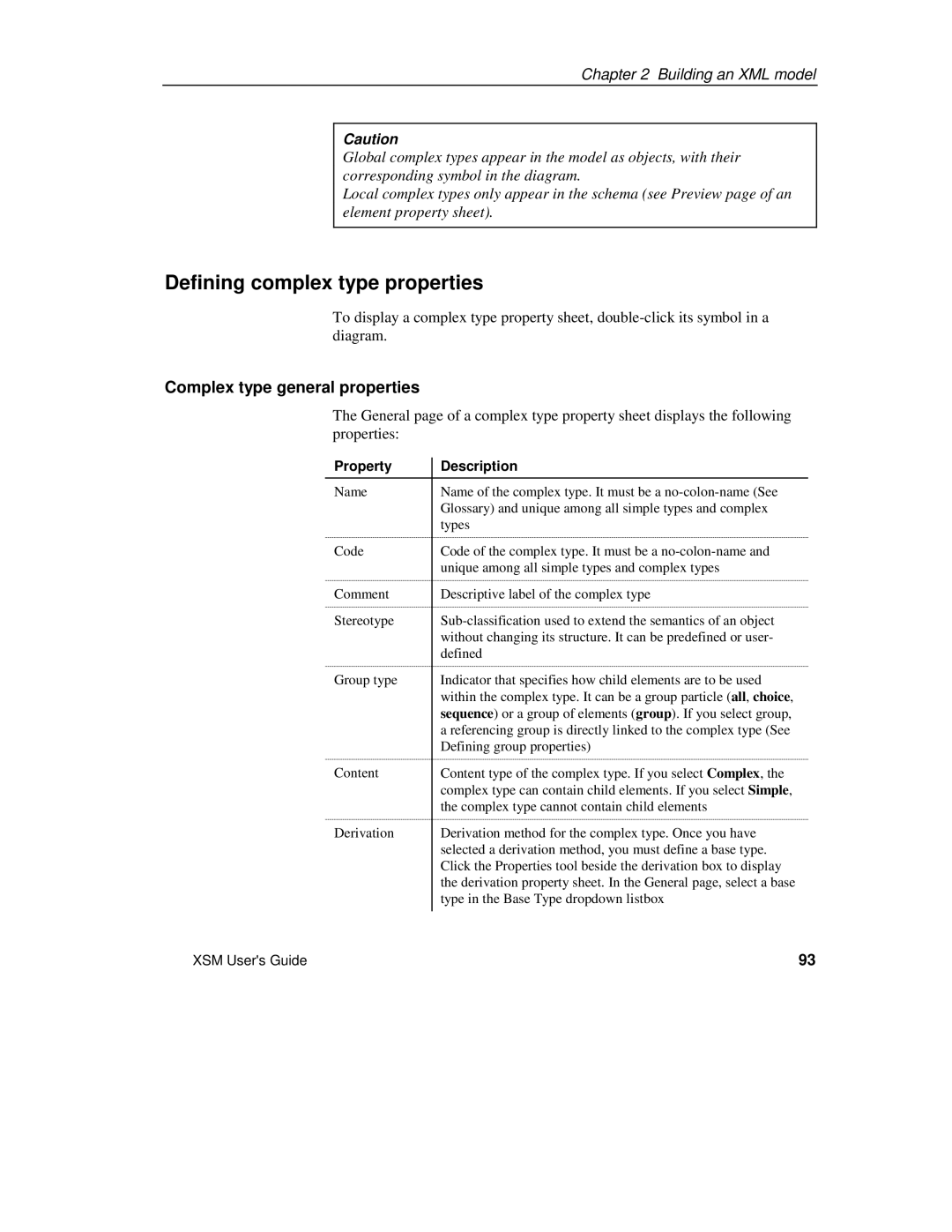
Chapter 2 Building an XML model
Caution
Global complex types appear in the model as objects, with their corresponding symbol in the diagram.
Local complex types only appear in the schema (see Preview page of an element property sheet).
Defining complex type properties
To display a complex type property sheet,
Complex type general properties
The General page of a complex type property sheet displays the following properties:
| Property | Description |
|
| Name | Name of the complex type. It must be a | |
|
| Glossary) and unique among all simple types and complex | |
|
| types | |
| Code | Code of the complex type. It must be a | |
|
| unique among all simple types and complex types | |
| Comment | Descriptive label of the complex type | |
| Stereotype | ||
|
| without changing its structure. It can be predefined or user- | |
|
| defined | |
| Group type | Indicator that specifies how child elements are to be used | |
|
| within the complex type. It can be a group particle (all, choice, | |
|
| sequence) or a group of elements (group). If you select group, | |
|
| a referencing group is directly linked to the complex type (See | |
|
| Defining group properties) | |
| Content | Content type of the complex type. If you select Complex, the | |
|
| complex type can contain child elements. If you select Simple, | |
|
| the complex type cannot contain child elements | |
| Derivation | Derivation method for the complex type. Once you have | |
|
| selected a derivation method, you must define a base type. | |
|
| Click the Properties tool beside the derivation box to display | |
|
| the derivation property sheet. In the General page, select a base | |
|
| type in the Base Type dropdown listbox | |
|
| ||
XSM User's Guide | 93 | ||
